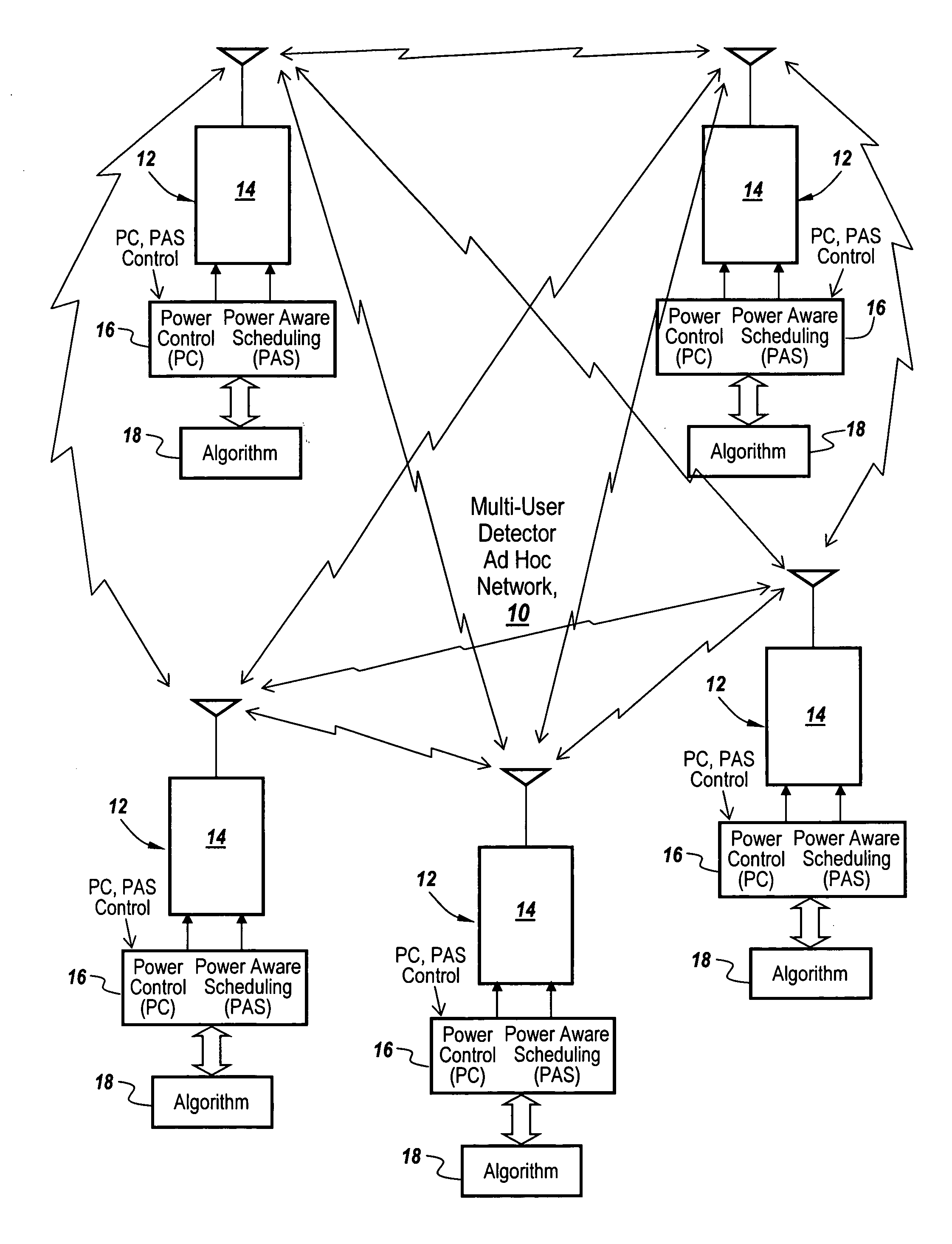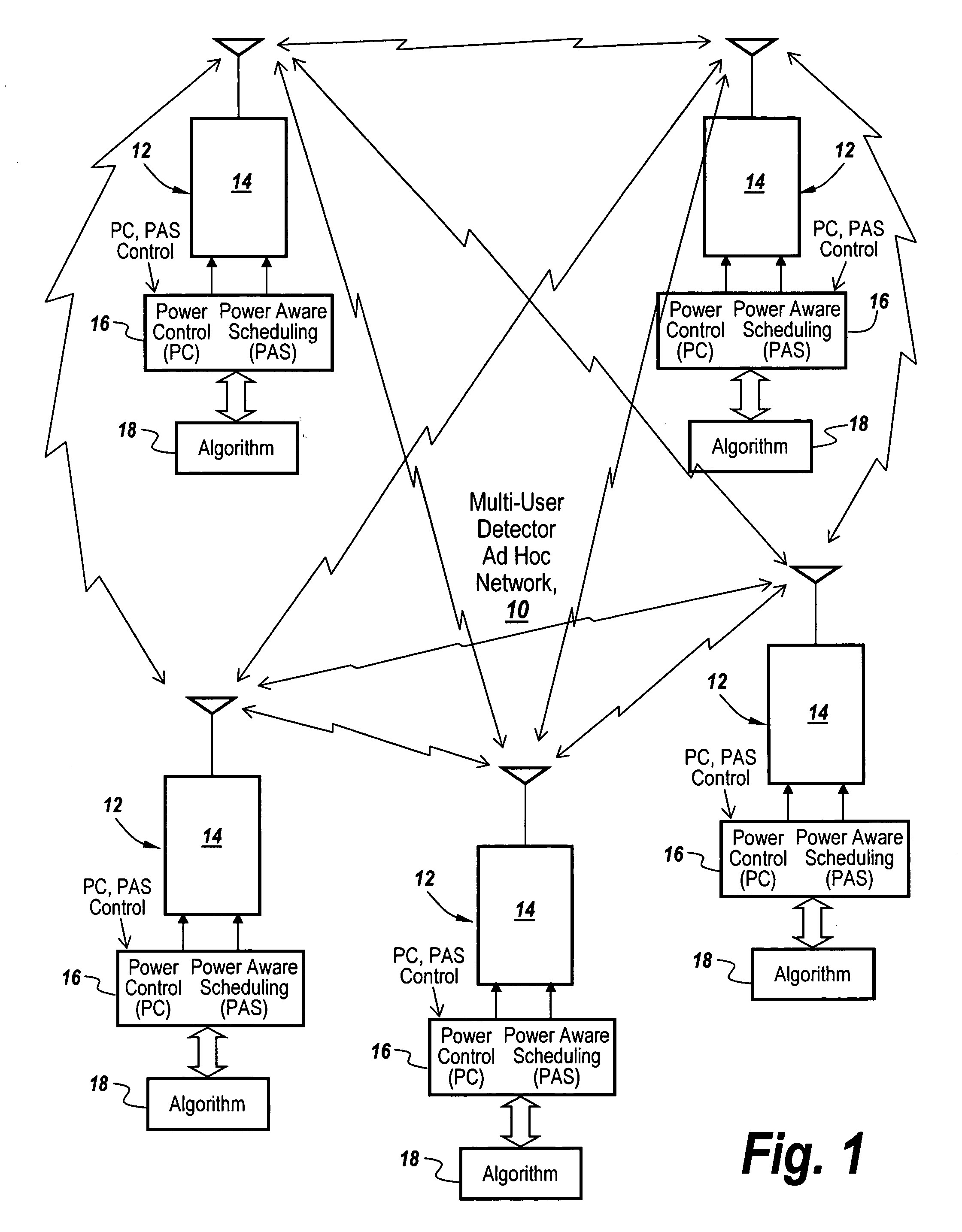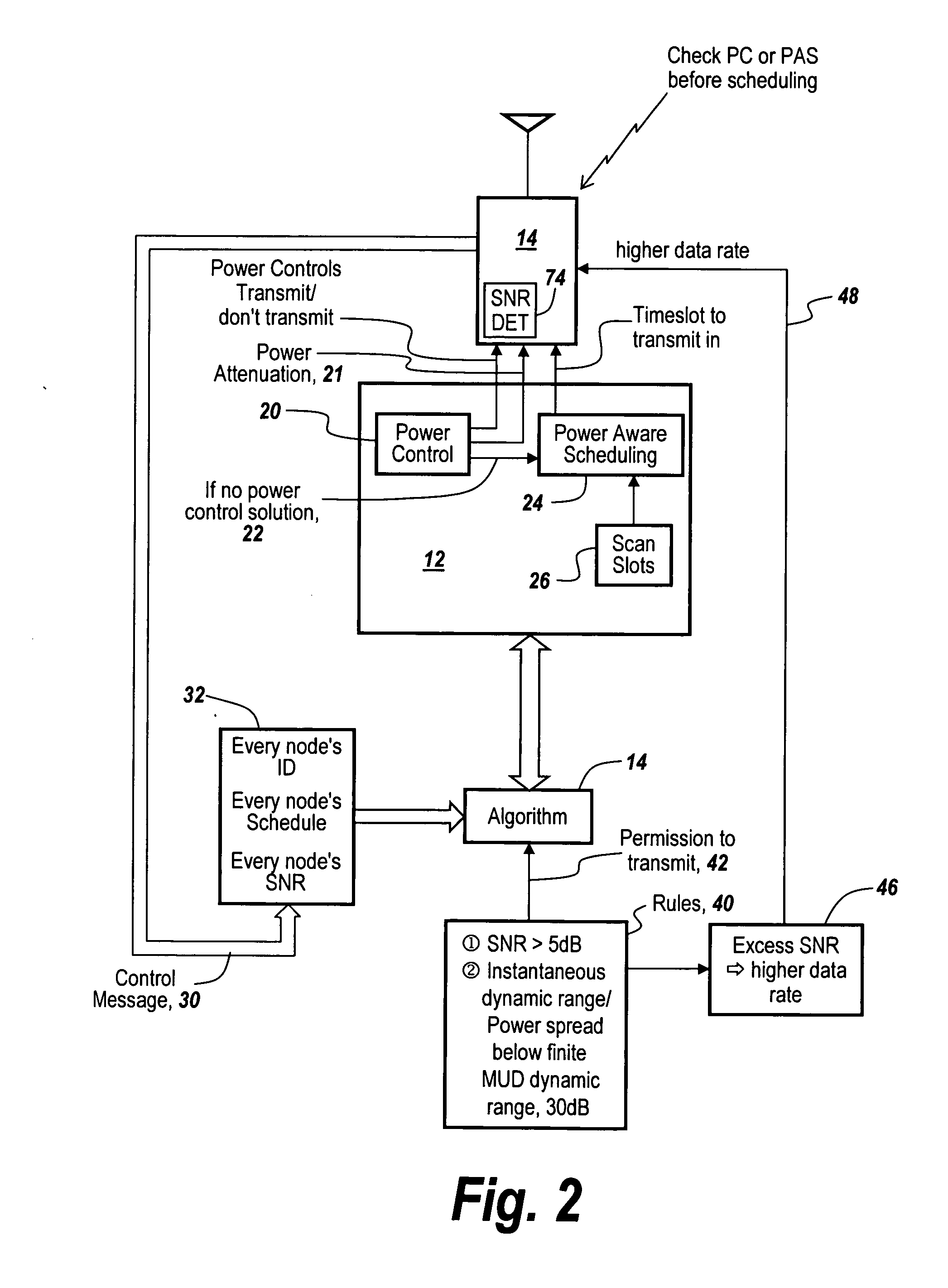Power aware scheduling and power control techniques for multiuser detection enabled wireless mobile ad-hoc networks
a technology of multi-user detection and power control, applied in power management, instruments, sustainable buildings, etc., can solve problems such as non-scheduled node transmission, achieve slow transmission rate, minimize error rate, and increase modulation and coding.
- Summary
- Abstract
- Description
- Claims
- Application Information
AI Technical Summary
Benefits of technology
Problems solved by technology
Method used
Image
Examples
Embodiment Construction
[0061]Power control or PC attempts to apply transmitter attenuation to control the power levels seen at each receiver. In a hub and spoke configuration, such as in a cellular network where all nodes transmit to a base station, the base station uses measurements from the handset's transmissions and responds with instructions to the handset to adjust its power level. Since the transmissions from all handsets are destined for the base station, the base station instructs the handsets to adjust their transmit power until they all arrive at the base station at approximately the same power.
[0062]In an ad-hoc network, it is impossible to have the transmissions from a node A and a node C arrive at the same power at both receivers, for instance at nodes B and D. In a lot of cases though, the power levels can be controlled at all receivers such that the power spread is within the MUD dynamic range. In certain cases transmit power control can be used to solve the dynamic range coor...
PUM
 Login to View More
Login to View More Abstract
Description
Claims
Application Information
 Login to View More
Login to View More - R&D
- Intellectual Property
- Life Sciences
- Materials
- Tech Scout
- Unparalleled Data Quality
- Higher Quality Content
- 60% Fewer Hallucinations
Browse by: Latest US Patents, China's latest patents, Technical Efficacy Thesaurus, Application Domain, Technology Topic, Popular Technical Reports.
© 2025 PatSnap. All rights reserved.Legal|Privacy policy|Modern Slavery Act Transparency Statement|Sitemap|About US| Contact US: help@patsnap.com



